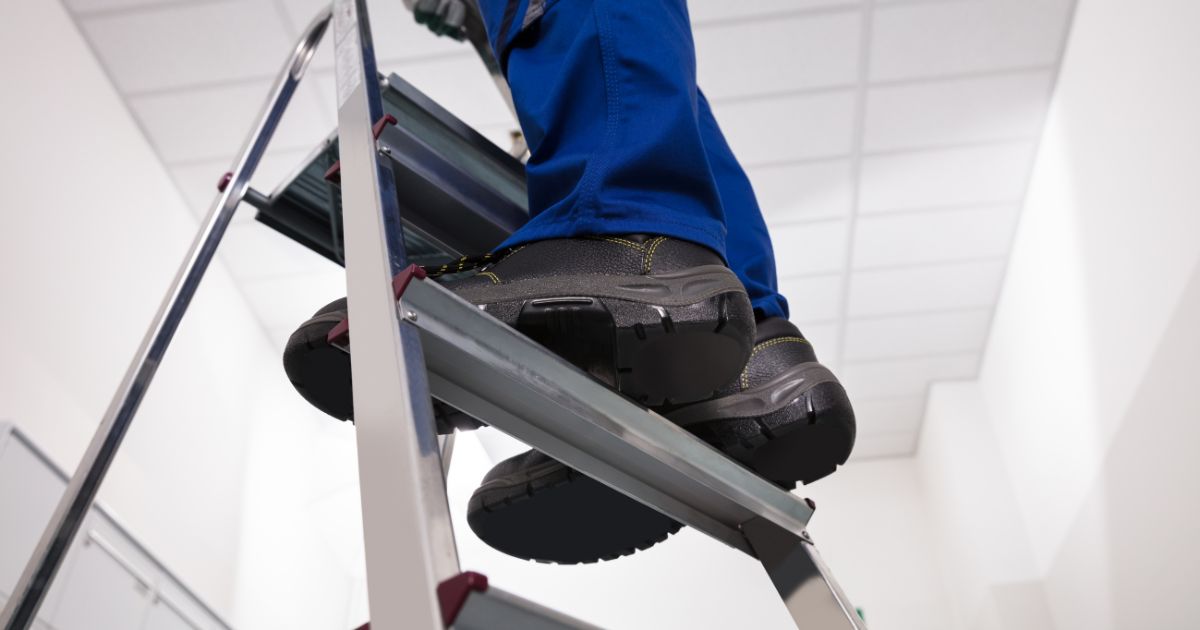What Are the Common Causes of Workplace Ladder Accidents?

Ladder accidents are prevalent in the workplace, particularly in trades such as construction, warehouses, factories, and shipbuilding. The Occupational Safety and Health Administration (OSHA) reports that over 20,000 workplace injuries involving ladders occur yearly in the United States, with more than 150 resulting in fatalities. Some of the most common causes of ladder accidents include:
- Selecting the wrong type of ladder.
- Incorrect use, not per the manufacturer’s instructions.
- Using ladders with damaged or worn steps, rungs, or side rails.
- Incorrect extension ladder setup.
- Exceeding the manufacturer’s recommended weight limit.
- Incorrect ladder placement for stability.
- Incorrect size ladder for the job.
- Placing a ladder on a slippery surface.
- Using a ladder with non-conductive side rails near electricity.
- Ladder with slippery steps or rungs.
- Placing a ladder on scaffolding or other unfixed surfaces.
- Failing to inspect the ladder before use.
- Ladder being struck by a vehicle while in use.
- Placing a ladder on uneven or soft ground.
- Overreaching to the sides while working on a ladder.
- Missing the last step when descending.
- Insufficient safety training.
- Defective ladder.
What Are OSHA’s Ladder Regulations?
Pennsylvania and OSHA have established ladder safety regulations and usage and product liability laws in case of defective design or manufacturing or insufficient safety warning labels. These regulations apply whenever a ladder is used in any industry but primarily focus on the construction industry. Federal OSHA regulations and instructions regarding defective or damaged ladders are as follows:
- Portable ladders exhibiting structural defects involving steps, rungs, side rails, or other components are deemed defective. In such cases, a sign must be placed on the ladder informing workers of the ladder’s condition and that it is out of service and should not be used
- Ladders permanently affixed to a stable location on the worksite but have broken components or structural defects must be withdrawn from service until repaired. A sign warning of the ladder’s condition and out-of-service status must be placed on the ladder for workers.
- Ladders requiring repair must be restored to meet or exceed their original design and safety features before returning to use.
What Types of Injuries Occur in Ladder Accidents?
Injuries from accidents involving ladders vary from minor to severe, and even death, depending on the circumstances and the height the employee is working at the time of the accident. Common injuries include:
- Traumatic brain injuries.
- Broken or fractured bones.
- Neck and spinal cord damage.
- Soft tissue and organ damage.
- Internal bleeding.
- Electrocution.
- Cuts, bruises, and lacerations.
- Punctures from falling on something sharp or dangerous.
- Head trauma.
- Amputation.
Ladder accidents are common in the workplace and often result in severe or life-threatening injuries, resulting in medical bills, loss of wages, or the ability to work. Workers who have been injured in ladder accidents may be entitled to Workers’ Compensation benefits.
Philadelphia Workers’ Compensation Lawyers at Freedman & Lorry, P.C. Represent Clients Injured in Ladder Accidents at Work
If you have been injured in a ladder accident at work, our experienced Philadelphia Workers’ Compensation lawyers at Freedman & Lorry, P.C. will fight for the compensation you deserve. Call us today at 888-999-1962 or contact us online to schedule a free consultation. Located in Philadelphia and Cherry Hill, New Jersey, we proudly serve clients in Pennsylvania, and New Jersey.
